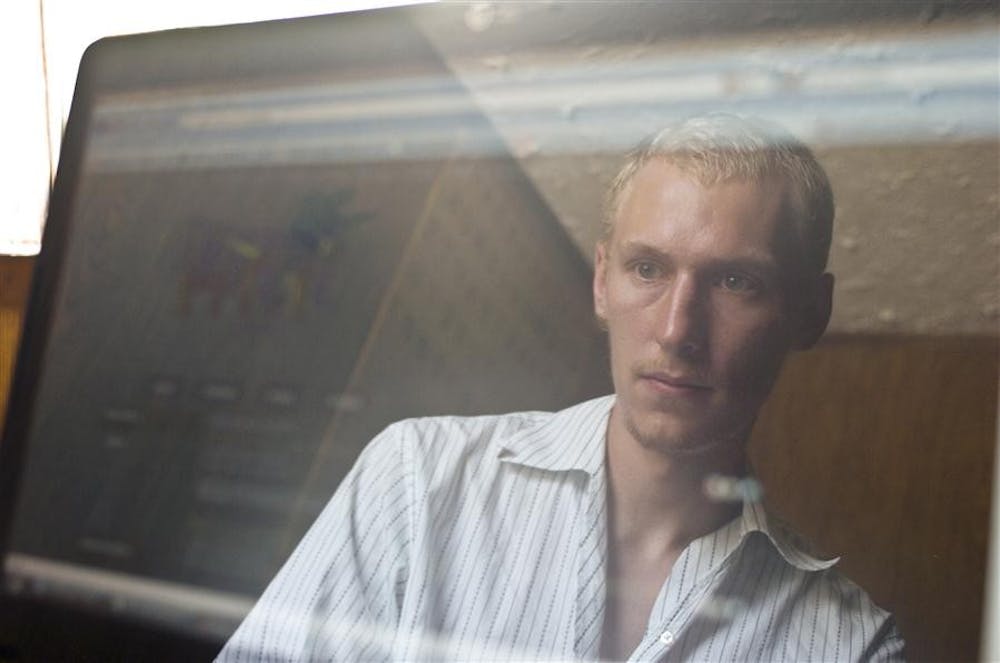If people of all working trades could say that the economic downturn has affected them adversely, the arts community would seem especially vulnerable to the whims of the market.
Of 700 artists surveyed by the Artists Trust in 2009, 47 percent noted “fewer opportunities” and 44 percent noted “less demand for work.”
So begins the story of Troy Engelhardt, a Bloomington-based web designer and ceramicist. Troy decided to work in Web design when he experienced the difficulty of working as an artist within a failing economy at a time when art degrees are plentiful and talent is common.
He noticed that having a professional portfolio available online was a key factor in getting commissions and contracts.
“It’s probably one of the hardest things for an artist to do, to make a coherent portfolio,” he said. “It’s about appreciating their talents and displaying them.”
Artists’ promotion can end at Facebook — unless they have the technical ability or help to create a place for themselves online.
He said he thinks the results are difficult to quantify, but it seems that clients succeed because of the emotional advantage that having a professional website can offer. Troy looks for clients who are natural achievers and willing to go the extra mile.
In the past, he’s worked for JB Salvage and Clinique Wellness, as well as Quantum 7 Productions. He recently designed the new Q7 microsite, www.encounterq7.com. Troy recruited a friend and IU sound professor to play and record the music track for the site.
“It’s that kind of conceptual, inclusive, artistic camaraderie that I love,” he said. “I’d rather work with the competition — that’s something that’s really missing in our society. I guess you could say I’m an artist in a business world.”
Troy said he loves using people’s natural energy toward a common goal, an attitude that separates him from his business-minded counterparts. He’s unwilling to accept a corporate position and only takes jobs in the local environment out of principle.
“It’s immensely rewarding — to talk to people, meet with people, find their dreams and try to realize them,” he said.
He often does volunteer work, recently completing Habitat for Humanity’s “Builder’s Blitz” project, and is particularly interested in human-computer interaction, an emerging field in informatics.
Troy explained HCI as user-interface design, experiential learning and database organization. Informatics makes special use of prototyping, another of Troy’s skills.
High-fidelity prototyping — building a blog or website with free open-source technology, demonstrating this strategy to clients and helping them cut costs by 50 to 60 percent relative to the prices of a design firm — is his domain. He used this method for Habitat for Humanity, basically creating an instruction manual to help the company navigate site design and costs.
Troy’s advice is valuable given his background as a ceramicist. In fact, he took up web design simply as a means to promote his own artwork.
The competition he faced drove him to pursue helping others create their portfolios online, but his dream is remains strong: He hopes to one day have the funds to open a ceramics studio.
A student at IU-Bloomington, Troy originally attended the IU-Purdue University Indianapolis Herron School of Art and Design. His concentration was ceramics before switching to telecommunications for web design.
He still makes abstract-figurative ceramic works, focusing on the duality of beauty and evil, raw emotion and negative space. His pottery is characterized by beautiful mixed glazes and contrasts. It’s sometimes complemented with barbed wire and the occasional trompe-de-l’oeil, realism creating a dimensional illusion.
However, he says that web work is his main focus.
“It’s the most underappreciated art form,” he said.
Camaraderie helps artists through recession

Get stories like this in your inbox
Subscribe





